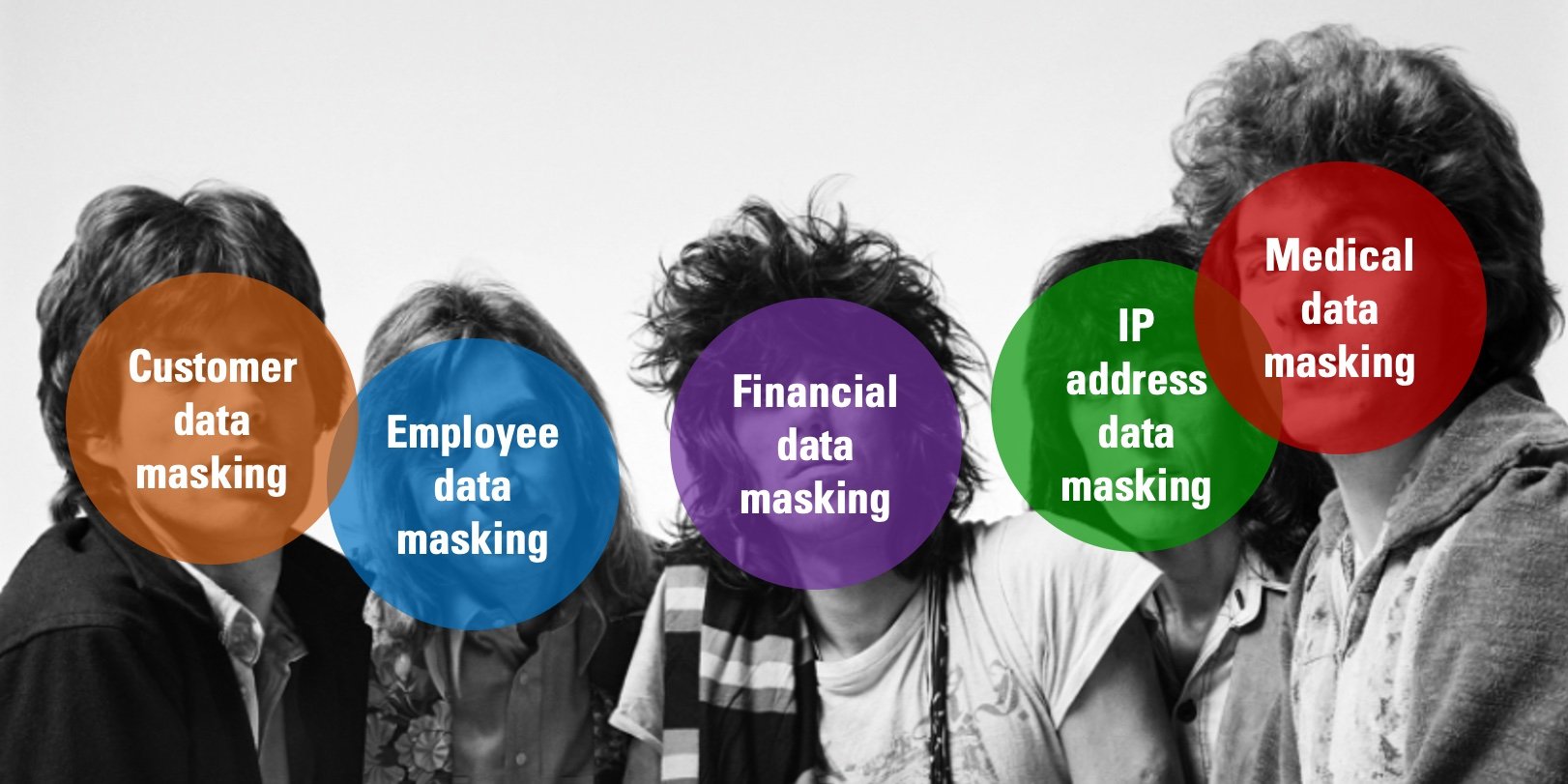Masking personal data is a great way to protect it, while ensuring its functionality. Learn about the most common data masking examples and use cases here.
Data Masking Examples are Everywhere
Governments, companies, and health organizations all store personal information about their citizens, customer, employees, or patients. Privacy regulations mandate the protection of this data to reduce the risk of a data breach, and ensure that people’s private information remains private.
Data masking (DM), also known as data anonymization, protects sensitive data by replacing personally identifiable information (PII) with fictional, yet statistically equivalent, data.
Production, analytics, and security teams alike favor data masking tools, because properly masked data cannot be identified or reverse-engineered. However, it can still be operationalized to support a variety of use cases. Today, rapid and secure data integration is a business necessity, making data masking software an invaluable asset.
In this article, we’ll cover key data masking use cases and techniques, and explain when to use each using real data masking examples.
Top Data Masking Use Cases
Many business units require access to data that might contain sensitive information, including DevOps, QA, customer success, sales, and more. By masking data, data consumers throughout the organization can access secure, functional data while eliminating bottlenecks.
This applies equally to legacy environments, where mainframe data masking ensures that historical customer and transaction data remains protected.
Here are the most common examples of data masking use cases:
-
Test data management
Software and application testing teams require realistic, complete, clean, compliant, and reliable data for test data management. By hiding real data, testing teams can use their test data management tools without exposing sensitive production data to security risk. -
Data security
Although masked data looks realistic, it’s useless to a hacker in the event of a data breach. By masking data, data security teams ensure that real people or events cannot be identified – and masked data can’t be used for fraudulent transactions. -
Data governance
Many organizations embed masking functionality in their data governance tools, to control who can access different types of data. Different types of data masking enable you to define access controls in different ways. For example, static DM anonymizes data at rest, while dynamic data masking allows you to mask data inflight, as well as set more detailed restrictions, such as defining permissions based on role or environment. -
Data compliance
Data masking software makes it easier to adhere to PCI/DSS, HIPAA, CPRA/CCPA, GDPR, and DORA compliance, by preventing non-sanctioned use of real customer data. This is a major driver for enterprises, for whom compliance poses a significant challenge and cost. -
Customer 360
A 360° view of the customer (also called a single customer view) provides a complete, unified picture of the customer – one that integrates the interaction, transaction, and master data for each customer. Data obfuscation protects customer data and supports compliance, while enabling on-demand access for business users.
5 Common Data Masking Examples
Here’s a list of common real-world scenarios in which organizations obscure sensitive data secure, along with the most appropriate data masking techniques for each.
-
Masking customer data
Almost all medium- to large-size companies today use a CRM to store and manage customer data, including names, phone numbers, email addresses, employment history, and more. Protecting customers’ privacy (as well as active and inactive leads) requires companies to take appropriate measures to ensure this data is not accessible to unauthorized users. DM is an effective method for anonymizing CRM data while maintaining data reporting and BI (Business Intelligence) functionality. Shuffling, data aging, and data pseudonymization are all effective methods for this data masking example.
-
Masking employee data
Most large companies manage employee data in an HCM system. By masking an HCM, organizations can protect the sensitive information it contains, such as names, addresses, phone numbers, salary information, health insurance status, and more. Specific data masking methods, such as data pseudonymization or shuffling, could keep sensitive employee information secure while ensuring that the data remains usable for legitimate purposes, by relevant data consumers.
-
Masking financial data
Financial firms use various systems to store and manage investment portfolios for their clients. System databases would contain a variety of sensitive financial information pertaining to customers’ investments, including account numbers, account balances, transaction histories, names, Social Security Numbers, addresses, and more. The firm could anonymize its data by replacing sensitive information with dummy values, for example. Anonymized data would still be accessible to authorized data consumers, while upholding data security standards and complying with regulations such as the Gramm-Leach-Bliley Act (GLBA).
-
Masking IP addresses
Companies that use log files to track the activities of users on its application, website, or network may choose to mask the IP addresses in the log files. Encrypted lookup substitution, redaction, or shuffling are all data masking methodologies organizations could use to obscure real IP addresses. In this data masking example, the organization could still use masked IP addresses for testing or analytics purposes, while ensuring compliance with user privacy laws, such as GDPR and DORA European regulations.
-
Masking medical data
Hospital and health system databases, such as EHR systems, store and manage a wide range of personal information about patients, including names, address, phone numbers, medical histories, and more. To protect patients’ privacy and ensure compliance with relevant regulations (such as HIPAA), hospitals can mask EHR data using shuffling or data aging techniques to restrict access to unauthorized parties. In this data masking example, patient data can still be used for analysis and reporting, but would not expose the hospital or patient to risk.
A Business Entity Approach Supports All Data Masking Examples
No matter what the use case or specific data masking example, entity-based data masking technology offers unparalleled security and compliance assurance. It aggregates, cleanses, and provisions data from disparate systems by business entity (e.g., customer, vendor, or order).
By masking the data for a specific business entity as a singular unit, relational integrity of the anonymized data is maintained – assuring it’s always consistent, and complete. The data for each business entity is managed in its own, encrypted Micro-Database™. The PII in the Micro-Database is masked on the fly, based on predefined business rules.
The entity-based approach can perform dynamic or static, structured or unstructured data masking, while maintaining referential integrity across all databases and systems. It also enables a broad range of data masking types, ensuring you can mask and protect data in the most effective and appropriate method in any given scenario.













